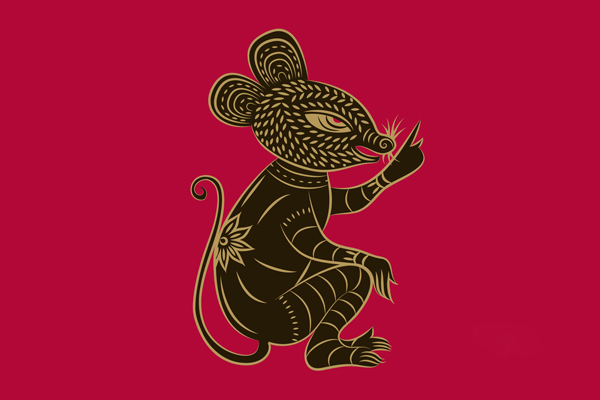The piece, by Can Ngoc Chuc entitled A Recovering Nutritious Wine, is a send-up of the ages-old tradition of soaking various animals in rice wine, so that they impart their medicinal properties to what becomes a drinkable tonic with a kick. Chuc’s choice of creature, of course, follows the show’s overarching theme of the newly arrived Year of the Rat.
In posing the question, however, of what could possibly be sought in this rodent essence, and who in turn would want to ingest it, to become rat-like, Chuc’s piece is a shocking introduction to the show’s deeper theme: an artistic confrontation of this changing, old-new nation unlike any attempted in recent years.
This is a bold exhibition. Bold for its experiments in medium and message that place it far in the forefront of the country’s artistic development. Bold for the candor and intimacy with which it discusses the experience of being a young person in Vietnam.
The Rat included works of video, sculpture, performance and installation art. The rat wine sits on a ledge just to the left of the exhibition’s entrance. Just to the right is Nguyen Huong Giang’s A ‘Bird-Rat’ Play, based on the folk saying, says Giang, “That birds and mice are very different but have the same job: stealing rice, little by little.” Where Chuc’s rats are dead, Giang’s tiny white mice – a whole litter of them – are very much alive. Scampering back and forth in a long, narrow enclosure of curving wood beams, the mice draw gleeful crowds of toddlers. Suspended over this horizontal cage is its vertical counterpart – a cylindrical wooden cage teeming with fluffy little birds.

One particularly poignant work is a video piece by Nguyen Thanh Hoa entitled This Wonderland. The video (part of a loop of all the show’s video works projected onto the large, white rear wall of the space and playing on two small red TV sets) features film footage of green farmland rolling by behind the window of a moving vehicle.
The square frame of the footage occupies the centre of the screen, surrounded by a thick black border. Moving across the image of the countryside is the silhouette of a hand, pointing at the scene and busily gesturing: this is a movie of a person watching, and responding to, a movie. A friend of the artist, Le Nhung, explained the story behind the work:
“Several years ago, Hoa took a trip down south by bus, filming the paddy fields with a handheld camera on the way down. When Hoa repeated the trip this year, she found that those fields had actually become smaller. More and more of the land was now being used for industrial purpose. You’ll notice that Hoa also fast-forwarded the footage on purpose, to show how rapidly this change is happening.”
Several other works deal with this palpable feeling of acceleration. The country, these works say, is becoming more competitive – rat wine for the rat race (and maybe a little rice-snatching on the side) – and in some ways, more stressful and impersonal. One video by Giang, also using the fast-forward effect, shows the disembodied arms and hands of students reaching down to rub the worn-smooth head of a stone tortoise at the Temple of Literature, a good luck ritual performed before taking an exam.
Amplifying the frenzied tension is the soundtrack, a sped-up cacophony at helium chipmunk pitch. Nguyen Hoai Van’s Love is an installation that makes use of video as well. One TV faces up from the ground, so that the viewer stares down at a still of a quivering anvil. A half-metre above faces down a matching TV set, this one showing a hammer coming down again and again into the camera.
Placing one’s head between anvil and hammer, one puts on a pair of headphones that steadily plays the clanging noise of metal impact. One can almost see the brains splattering. When asked why the installation was called Love, Hoai Van said, “It was originally called The Pressure, but that would have been too obvious. I’d rather have people put their heads in there and be surprised, to find out what it was really about: the pressure in life, in modern life: work, family, relationships, social change.”
Quy Duong, whose untitled performance piece, in which he used the kind of key-copying machine one would see on the street corner to copy visitors’ keys, used an artifact of the modern not to demolish one’s head, but to open it up. Duong said of his piece, “I want to say that everyone has unknown things inside them, so many things that they need to be locked up and stored away. The idea here is to open up other peoples’ lives. They have the locks, and I help them find their keys I want to make a copy of each person’s kys, to unlock each person.”
Duong is on to something- for all the challenges and dilemmas of the present day, the very art of these daring young creators are proof that the future holds true possibility for public modes of personal discovery and self-expression.


